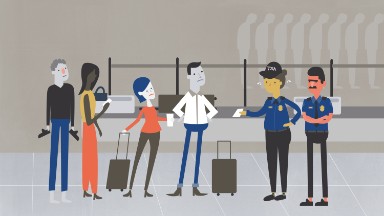How much you'll really pay for Obamacare
For some consumers, Obamacare’s skyrocketing insurance premiums will soon morph from a political mess to a pocketbook crisis.
As enrollment begins Tuesday, the impact of an average 22% rise in benchmark plan prices will vary wildly depending on where you live. While Obamacare plans on some state exchanges will have modest price increases, others will have staggering hikes.
The premium for the benchmark plan is more than doubling in Arizona, to an average of $422 a month for a 27-year-old enrollee. In Oklahoma, it's increasing 69% to $424. Monthly premiums range from a low of $219 in New Hampshire and Massachusetts to $760 in Alaska.
Yet most Obamacare participants won’t feel the full price hike or anything near it. Nationally, 85% of those enrolled receive a tax credit, which is based on the price of the second-lowest cost silver plan and an enrollee’s income. These subsidies put a limit on how much you have to pay.
Related: Would Clinton or Trump make health care more affordable?
For instance, 27-year-olds earning $25,000 a year would pay an average of $142 a month for the benchmark plan, after receiving the subsidy. A family of four making $60,000 would have to shell out an average of $405 a month.
But enrollees can also use their subsidies to buy lower-priced bronze or silver plans. That will allow more than three-fourths of current enrollees to pick a plan for $100 or less a month on the federal Healthcare.gov exchange.
To qualify for a subsidy, you must be a U.S. citizen and earn as a household less than four times the federal poverty level. If you’re single, you are eligible if you make less than $47,500 a year. The credits are on a sliding scale so the lower your income, the larger your subsidy.
Many consumers will discover they have fewer choices, since some major insurance companies and several smaller ones have scaled back from the Affordable Care Act's marketplaces.
Obamacare participants will be able to choose from plans offered by three marketplace providers, on average. Yet in at least five states, including Alabama and Oklahoma, enrollees will have options from only one insurer.
Despite its latest problems, Obamacare has sharply cut the rate of uninsured Americans under 65 to 10% in the first quarter of this year, down from 18% in 2010.
Still, about 27 million Americans under age 65 don’t have health insurance, according to a new Kaiser Family Foundation analysis. The reasons for this high number vary.
More than 40% of the uninsured could get some type of financial assistance for health insurance under Obamacare or Medicaid, but they haven't enrolled. They may not realize that they're eligible, or they may think the plan is still too expensive, even with the subsidy. In 2015, 46% of uninsured adults complained about the high cost of health insurance.
Undocumented immigrants don’t qualify for coverage. Some consumers turned down insurance at work or make too much to qualify for Obamacare tax credits (though they could buy full-price exchange plans).
Some 2.6 million uninsured Americans are caught in a “coverage gap” in the 19 states that chose not to expand Medicaid coverage. They make too much to qualify for Medicaid but too little to qualify for Obamacare tax credits.
Related: Drawing more uninsured into Obamacare is critical to its survival
Medicaid expansion was a key component of the Affordable Care Act, but it essentially became optional after a 2012 Supreme Court ruling. States that haven’t expanded Medicaid have generally seen smaller declines in the rates of the uninsured.





